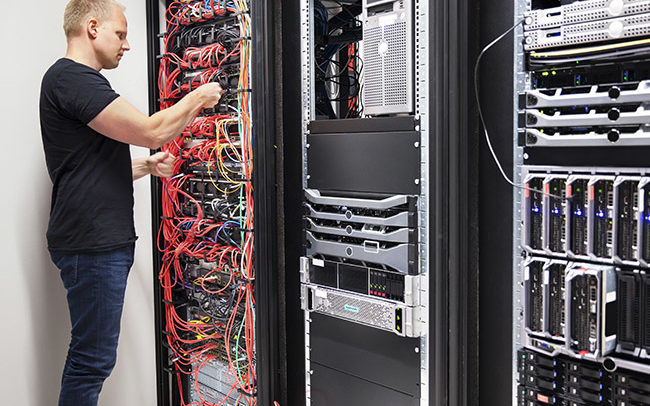


Progressive Office Cabling: Revolutionizing Connectivity for Modern Workspaces
Comprehensive Cabling Solutions
1. Cat5e, Cat6, and Fiber Optic Network Cabling
High-speed data transmission is vital for the efficiency and growth of any business. Our services include the installation of Cat5e and Cat6 cables, which are perfect for most office environments and support speeds up to 1 Gbps and 10 Gbps, respectively. Our fiber optic cabling is the ideal choice for enterprises requiring faster speeds and greater bandwidth, providing unparalleled data transmission capabilities immune to electromagnetic interference.
2. Rack and Cable Management Systems
A well-organized cabling system maintains an efficient and safe work environment. We design and install tailored rack and cable management systems that streamline cable distribution and enhance ease of maintenance and future scalability. Our solutions help avoid cable clutter, which can lead to decreased performance and increased risk of damage.
3. Cable Repair Services
Our expertise doesn't just stop at installation. Progressive Office Cabling offers comprehensive cable repair services to ensure your network maintains optimal functionality. Whether wear and tear, cut cables, or other damages, our technicians can swiftly diagnose and rectify issues, minimizing downtime and maintaining productivity.
4. Plenum and PVC Solutions
Safety in cable installations cannot be overlooked, especially in environments that require strict compliance with building codes. Our Plenum-rated cables are designed to meet the highest standards of fire resistance and low smoke production, which is ideal for spaces used for air circulation for heating and air conditioning systems. Likewise, our PVC cabling solutions are durable, cost-effective, and suitable for indoor applications.
5. Security Camera Systems
Enhance the security of your premises with our state-of-the-art security camera systems. From installation to maintenance, we provide high-quality cameras with the latest technology to monitor and protect your property effectively. Our systems are designed to suit various business sizes and can easily be integrated into your existing network.
6. Door Access Control and Card Readers
Secure your business further with our comprehensive door access control systems. We offer a range of solutions, from card readers to biometric systems, ensuring that access to sensitive areas is controlled and monitored. Our systems are customizable and can be integrated with other security measures to provide a comprehensive security solution.
7. Cable Certification and Compliance
Ensuring your cabling system meets industry standards and compliance requirements is crucial. Progressive Office Cabling provides thorough cable testing and certification services, verifying that your network cabling is up to standard and optimized for future needs. This service ensures your cabling infrastructure meets all regulatory requirements and reliably supports high data transmission rates.
8. Cabling Cleanup
Old cabling can cause many issues, from safety hazards to decreased network efficiency. Our cabling cleanup service helps businesses remove or reorganize outdated cables, enhancing overall network performance and safety while creating a cleaner, more organized workspace.
Why Choose Progressive Office Cabling?
At Progressive Office Cabling, we understand that each business has unique needs. That's why we offer customized solutions to enhance your network infrastructure. Our team of experts is committed to delivering top-notch service and support, ensuring that your business stays connected in today's digital world.
Contact us today for more information on how we can help your business thrive through superior cabling solutions. Revolutionize your workspace with Progressive Office Cabling, where connectivity meets reliability and security.
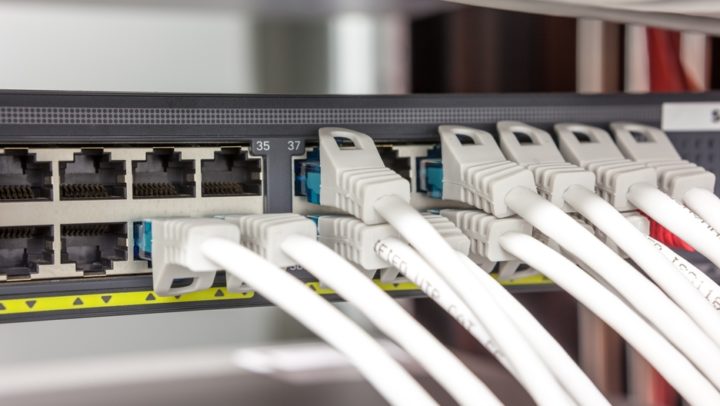
Five New Approaches for Data Center Cabling – Part 2
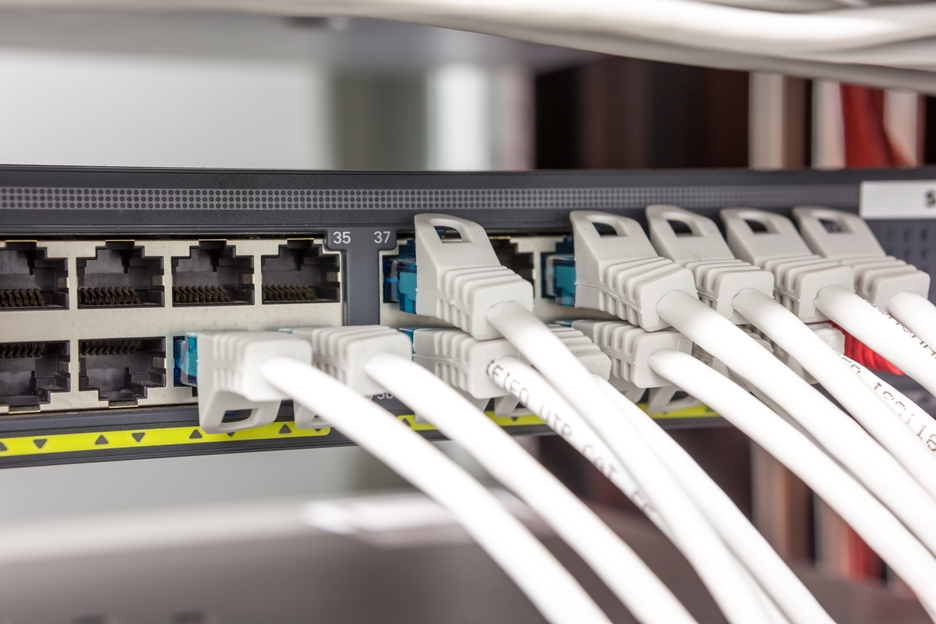 As discussed in Part 1, a properly designed network infrastructure is a prerequisite for being able to adapt emerging technology and support crucial systems cost effectively. Part 2 will discuss Modular Design, Optimized Network Infrastructure, and Virtualization.
As discussed in Part 1, a properly designed network infrastructure is a prerequisite for being able to adapt emerging technology and support crucial systems cost effectively. Part 2 will discuss Modular Design, Optimized Network Infrastructure, and Virtualization.
Modular Design
An approach that has recently gained traction is building new data centers capable of supporting the demand for excellent networking capability. Companies are increasingly participating during the construction phase by becoming more involved in decisions that help decrease costs. Specially designed and portable, modular data centers utilize engineered modules and components that offer the ability to scale and allow the creation of a converged infrastructure where necessary. Such modular designs are described as portable modular data centers or containerized data centers. Structured cabling is the foundation for every modular data center.
Optimized Network Infrastructure
According to data center providers, copper and fiber technology are sufficient for current networking infrastructure. However, there is a greater demand for more speed and streamlined connectivity for PCs, servers, and data storage. Optimizing data cabling is the method for achieving both. Optimized network infrastructure typically uses component standardization, including copper and fiber cabling, racks, and cabinets. Teamed with a physical-layer cable-management system, this approach results in a network that is both accessible and organized.
Virtualization
Research has found that more than half of small and medium-sized enterprises have their workloads running on virtual machines. In addition, more than 9 in 10 data center providers are now offering virtualization services to businesses. Proven to be scalable and cost-effective, virtualization technology is being commonly used for these four functions: desktop, server, network, and storage. As the popularity of IT infrastructure virtualization increases, ensuring that your organization has well-designed structured cabling will grow in importance.
Progressive Office Cabling
Founded in 1986, Progressive Office’s success has been a direct result of years of commitment to seeking solutions on behalf of our clients in the Washington, D.C. and New York City areas. Efficiently working together, Progressive teams get cabling installed and operating as fast as possible while minimizing disruption and downtime. Call our toll free number (800) 614-4560 today.

Five New Approaches for Data Center Cabling – Part 1
 Organizations and data centers have concluded that structured cabling provides a durable foundation for a sound and efficient network infrastructure. As a result, management teams are reconsidering their existing data cabling configurations. For example, organizations are thinking of transferring some or all of their IT systems to cloud-based data centers that utilize virtualization.
Organizations and data centers have concluded that structured cabling provides a durable foundation for a sound and efficient network infrastructure. As a result, management teams are reconsidering their existing data cabling configurations. For example, organizations are thinking of transferring some or all of their IT systems to cloud-based data centers that utilize virtualization.
A properly designed network infrastructure is a prerequisite for being able to adapt emerging technology and support crucial systems cost effectively. Conventional cabling met network requirements in the past, but the growth of data and demand for speed are rapidly transforming what a business will need in the future.
New companies are planning their data center cabling structure well ahead of their first day of business to attain high efficiency, maximum utilization, and optimal provisioning. During the conception stage, data center architecture needs to address issues revolving around space, power, cooling, security, and costs.
Data transmission and storage, communications, power, and video should also be prioritized. However, monitoring, network security, system updates, backups, software support, and maintenance are also of great importance.
As you may be considering improving your company’s network, it may be helpful to keep in mind four new approaches for data center cabling discussed below.
Convergence
The concept of convergence has been applied to networking and data cabling. Functions for data, phone, and video are being offered on a single network by service providers. Introduced several years ago, the convergence approach is gaining in strength via structured cabling for data centers.
Applying this approach allows for greater cable density or minimizing cable usage, resulting in providing the proper network capacity for a particular architecture and delivering the advantages below:
- High density server racks and storage arrays reduce cable pathways for improved air flow.
- Input and output convergence offers simplified data cabling and greater design flexibility.
- Higher-density connectivity and higher-capacity cables provide improved performance.
Part 2 will discuss Modular Design, Optimized Network Infrastructure, and Virtualization.
Progressive Office Cabling
Founded in 1986, Progressive Office’s success has been a direct result of years of commitment to seeking solutions on behalf of our clients in the Washington, D.C. and New York City areas. Efficiently working together, Progressive teams get cabling installed and operating as fast as possible while minimizing disruption and downtime. Call our toll free number (800) 614-4560 today.

How Structured Cabling Can Improve Your Business
 Corporations that have subsidiaries located in many countries worldwide, as well as a smaller company with a handful of departments and employees, need a well-designed network that connects all their computers, printers, servers, and more.
Corporations that have subsidiaries located in many countries worldwide, as well as a smaller company with a handful of departments and employees, need a well-designed network that connects all their computers, printers, servers, and more.
An improperly installed network can result in chaos for an entire organization as it expands. In contrast, a well-designed structured cabling system allows a network to function smoothly even when it is growing rapidly.
During this period of increasingly sophisticated technology, structured cabling is the right answer for building an efficient and cost-effective network. There are numerous companies around the world that specialize in installing structured cabling, but finding the right team for your company will require due diligence.
Many companies undergoing growth focus on revamping existing structured cabling to ensure an uninterrupted flow of an increasing volume of communications and data. They hire a team of specialists who provide guidance on the cabling that will be ideal for their new infrastructure.
Designing and planning a new network revolves around implementing structured cabling solutions that will help a company meet its business needs. There are a handful of basic guidelines for the installation as summarized below:
- Ethernet cable for office buildings, data centers, call centers, small offices, and warehouses
- Fiber cable, multi-mode and single mode, for long distance calls and interactions that are free of interference
- Telco-level network wiring, patch panels, and jacks
In the case of a small office, a brand new space yet to be wired, an existing site undergoing remodeling, or a skyscraper filled with office suites, installing well-designed structured cabling that ensures an efficient and expandable network, is the key to success for the great majority of businesses. Properly installed structured cabling helps ensure the rapid and continuous flow of data, the most valuable asset of a modern company.
Progressive Office Cabling
Founded in 1986, Progressive Office’s success has been a direct result of years of commitment to seeking solutions on behalf of our clients in the Washington, D.C. and New York City areas. Efficiently working together, Progressive teams get cabling installed and operating as fast as possible while minimizing disruption and downtime. Call our toll free number (800) 614-4560 today.

Planning – Network Design Requirements
 After receiving the requirements for a network, it is common for designers to prioritize their implementation and integrate them into the format of the design. Occasionally, they initially rely on best practices, instead of focusing on planning. This is unfortunate because the planning process often leads to discovering multiple viable design solutions.
After receiving the requirements for a network, it is common for designers to prioritize their implementation and integrate them into the format of the design. Occasionally, they initially rely on best practices, instead of focusing on planning. This is unfortunate because the planning process often leads to discovering multiple viable design solutions.
Designers should first make business-centric decisions determining either the solution or design that supports the company’s objectives or strategy. Although it is advisable to follow best practices for network design, reliance on them is more typical on occasions when a network is being designed from the ground up, which is usually not the case for large service providers and enterprises.
Let’s consider optimizing office buildings as a comparison. The standard procedure for civil engineers and architects is to perform an evaluation of a building by identifying existing problems, understanding the organization’s goals, and gathering business requirements. Afterwards, they begin optimizing the office building’s existing features. As examples, this may involve replacing the elevators or expanding the lobby.
The above is similar to the procedure for revamping network design. There will always be faulty designs that were poorly planned. Sometimes they are unable to scale, or adopt emerging technologies, or adapt to changing business conditions. Thus, designers must first make a comprehensive study of the existing business problems, IT requirements, and network design. Next, they should develop solutions that will optimize the present architecture. This may entail redesigning several components of the network. It can also require the addition of a new data center.
In order to choose the correct design choices and technologies, network designers must gather the necessary information that will allow them to make a sound analysis during the planning stage. This also lets them correctly determine the new requirements that will support the company’s business goals. At this point, network designers typically utilize the decision tree and the decision matrix for easing and simplifying the process.
Progressive Office Cabling
Founded in 1986, Progressive Office’s success has been a direct result of years of commitment to seeking solutions on behalf of our clients in the Washington, D.C. and New York City areas. Efficiently working together, Progressive teams get cabling installed and operating as fast as possible while minimizing disruption and downtime. Call our toll free number (800) 614-4560 today.
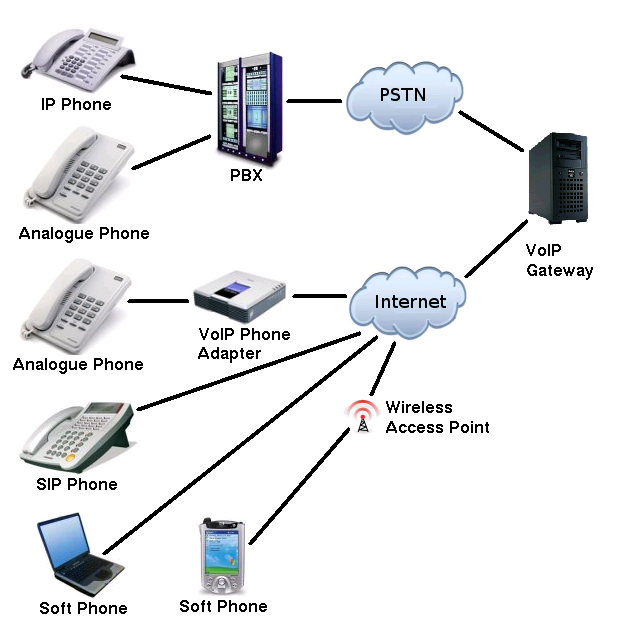
Constraints of Network Design
 The constraints of network design are existing factors that cannot be altered, often impacting architecture and functional requirements. These constraints can have a significant effect on network design and must be taken into account. Below are the most familiar design constraints that must be addressed by a network designer.
The constraints of network design are existing factors that cannot be altered, often impacting architecture and functional requirements. These constraints can have a significant effect on network design and must be taken into account. Below are the most familiar design constraints that must be addressed by a network designer.
Cost
Cost is certainly a limiting factor that must always be considered during the design process.
Experienced & Expensive Staff
In order to quickly adapt to new technology, a company may decide to hire technical employees who are expert in the new technologies, but cost more in salary. The greater operational costs for their expertise may exceed the benefits from the decreased TCO (total cost of ownership) derived from the latest technology.
Expertise of Staff
It may be the case that the most efficient, cost-saving design with state-of-the-art technology was presented by the network design team. However, the current staff may not have the experience or know-how to implement this new technology.
Infrastructure Equipment
In cases where an organization has not planned how to replace legacy network devices, the situation can lead to severe limitations on network design. This is quite apparent when new protocols and features cannot be supported.
Location
This is a difficult kind of constraint because location involves limitations that have an indirect effect on design. To illustrate, a rural site might be in a region where fiber infrastructure is not present and wireless is the only connectivity.
Staff Training
Due to the lack of experience of technical staff in a newer technology, issues may take longer to detect and repair until they are adequately trained. This will lead to longer downtimes that render a data center nonfunctional, resulting in business losses.
Time
When choosing an architecture or technology, time becomes a constraint when the time frame plays a part in remaining on schedule for the completion of the project.
Progressive Office Cabling
Founded in 1986, Progressive Office’s success has been a direct result of years of commitment to seeking solutions on behalf of our clients in the Washington, D.C. and New York City areas. Efficiently working together, Progressive teams get cabling installed and operating as fast as possible while minimizing disruption and downtime. Call our toll free number (800) 614-4560 today.
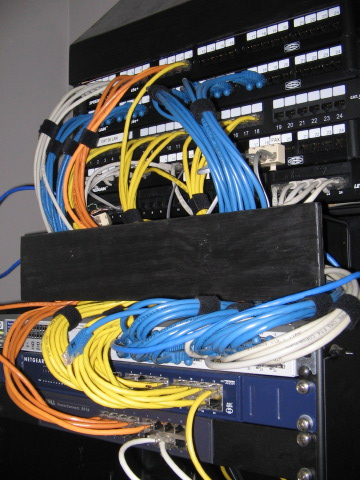
The Benefits of Structured Cabling for IT Infrastructure
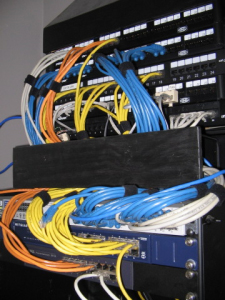 Utilizing best practices developed over time, structured cabling determines the design and construction of an organization’s IT infrastructure. Standardized practices ease modifications and additions and promote compatibility and reliability. The following will discuss the benefits of structured cabling for your organization’s IT infrastructure.
Utilizing best practices developed over time, structured cabling determines the design and construction of an organization’s IT infrastructure. Standardized practices ease modifications and additions and promote compatibility and reliability. The following will discuss the benefits of structured cabling for your organization’s IT infrastructure.
Efficiency
There will be times when it will be necessary to move forward with changes to your IT infrastructure. When this involves dealing with improperly placed cables without a labeling system, each project will take longer than what would be necessary for a well-organized system. Structured cabling’s best practices decrease downtime and minimize mistakes.
Flexibility
Structured cabling allows flexibility, meaning repairs and changes to the infrastructure become easier and faster to perform. This means data center managers will not hesitate to implement needed changes because they don’t have to deal with disorganized cabling that make their jobs much harder.
Future Proofing
The perpetual improvements of telecommunications technology make it crucial to have an IT infrastructure that can adapt to future technical advances. Structured cabling makes this possible by ensuring upgrades are not difficult to integrate with the existing system. Structured cabling enables future proofing, and so it can be considered a sound investment for companies anticipating expansion.
Redundancy
Structured cabling allows the creation of an IT infrastructure that features redundancy, which helps ensure reliability and accessibility, particularly during maintenance or repair. If a cable is somehow compromised, data communications can keep functioning over redundant cabling as repairs are being performed.
ROI
Business owners should consider structured cabling as an investment that will improve their IT infrastructures. As it will significantly increase the efficiency of its data operations, the ROI (return on investment) could far exceed the initial outlay for implementation over time.
Progressive Office Cabling
Founded in 1986, Progressive Office’s success has been a direct result of years of commitment to seeking solutions on behalf of our clients in the Washington, D.C. and New York City areas. Efficiently working together, Progressive teams get cabling installed and operating as fast as possible while minimizing disruption and downtime. Call our toll free number (800) 614-4560 today.

